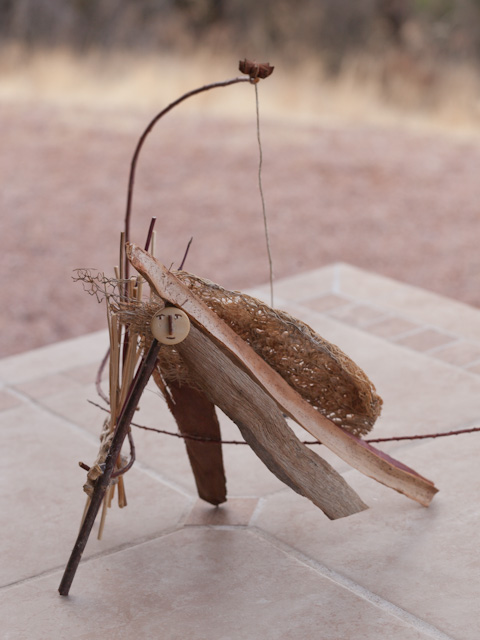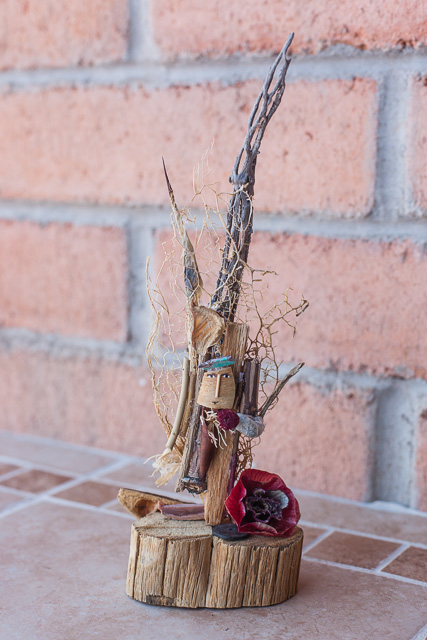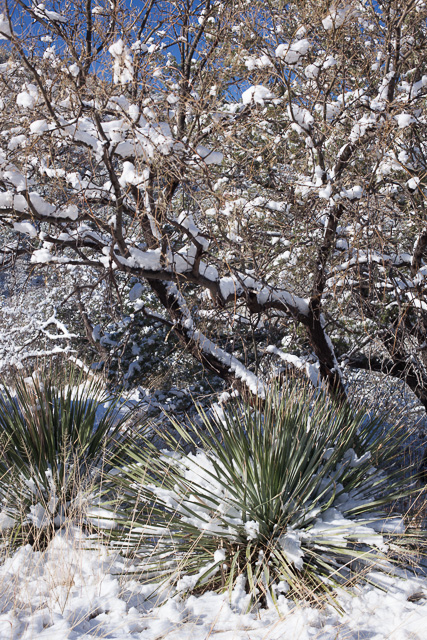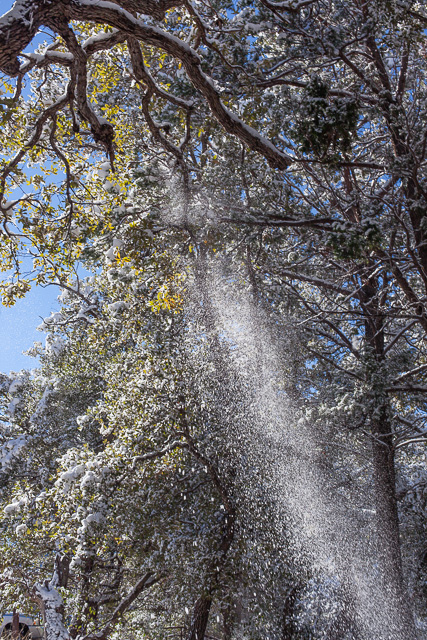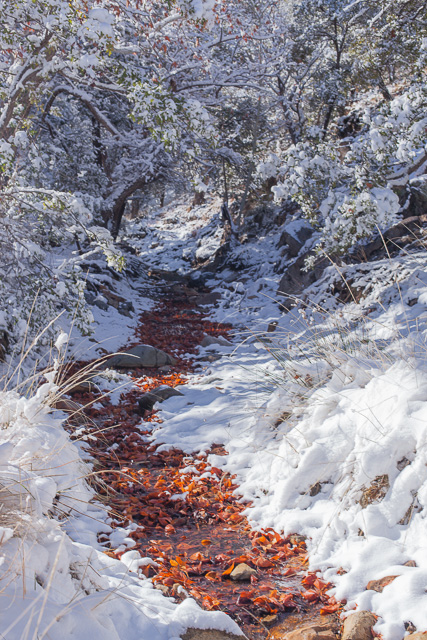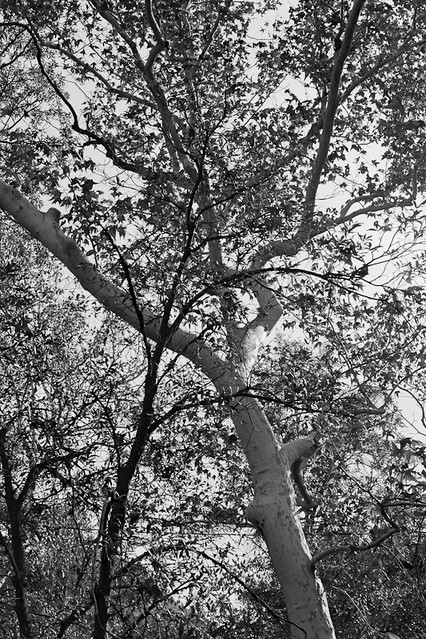“The Tax Shelter represents the existential struggle between the spirits. The Face is the powerful Sherpa Talisman (protector) . . . “
“. . . and the rocks on the tether represent the vagaries of the tax rules – swinging forth and back.”
~Sherpa
In the last post, I wrote about a workshop — Figures from Natural Materials — offered on January 28 at Boyce Thompson Arboretum State Park. Sherpa was visiting for an extended weekend, and we had already planned to take a day trip on his last day in Arizona. He agreed to take the workshop with me, even though he claims he’s never created a piece of original art. (He’s a numbers guy – accounting and tax stuff — and says he uses his creativity decoding the tax code. And I believe him — that would require a great deal of creativity.)
We had plenty of time to discuss the details of the workshop on the two-drive drive from Tucson to Superior. He grimaced a bit at the idea of making a “doll” from natural materials of the desert, but when I suggested he might want to make a structure or a shelter of some sort, he brightened considerably. Actually became excited.
“A shelter? I could make a TAX shelter!” he said, beaming at the idea.
And so he did.
Truly, he was one of the stars of the class. Ruth Ipsan-Brown, the workshop instructor, gave basic instructions and let us each create on our own. Sherpa did a fine job exploring the vagaries of glue guns, seed pods, and tax rules as he constructed his Tax Shelter. And he even sent me an explanation of his art, so that all could appreciate the meaning of his sculpture.
Thanks, Sherpa. It was a great afternoon – creating art, walking the arboretum, and making memories!
————
Bo Mackison is a photographer and owner of Seeded Earth Studio LLC. She takes time away from photography to explore other creative arts and create great memories, too.
